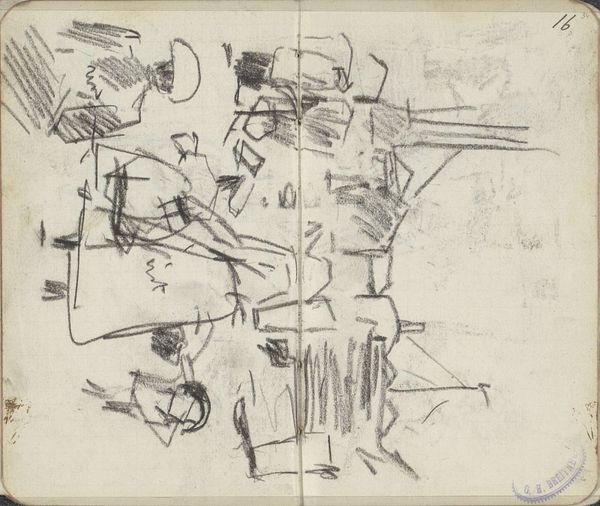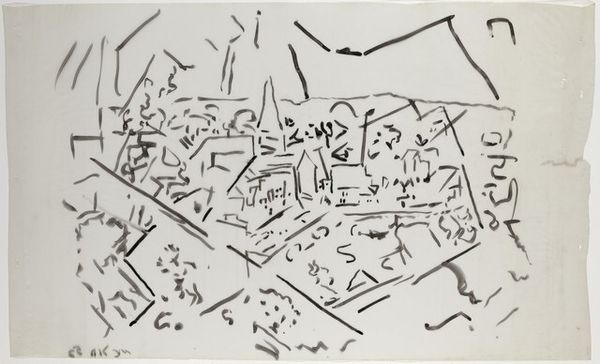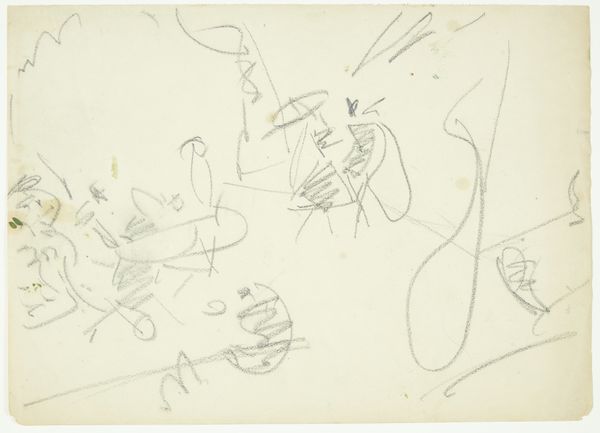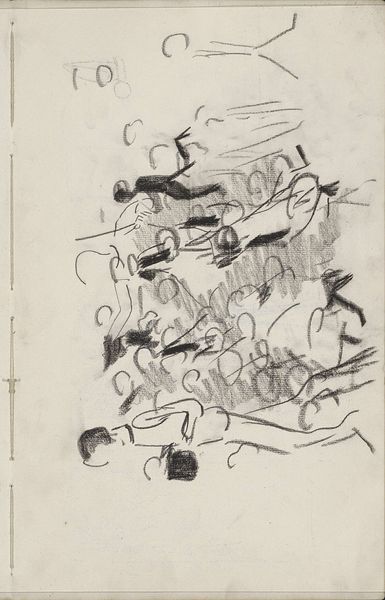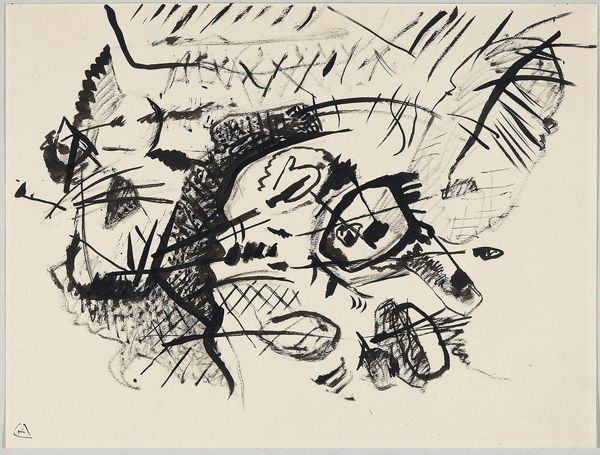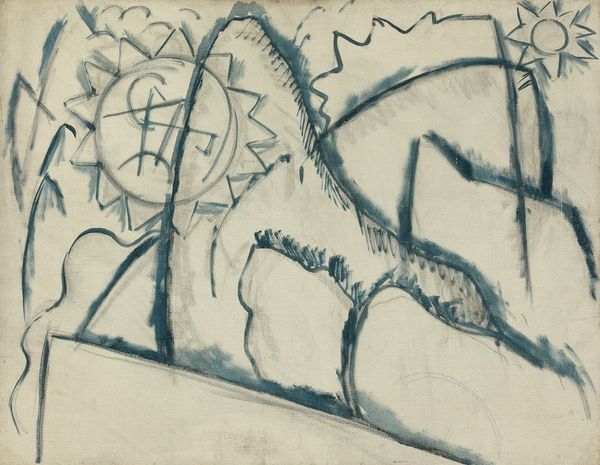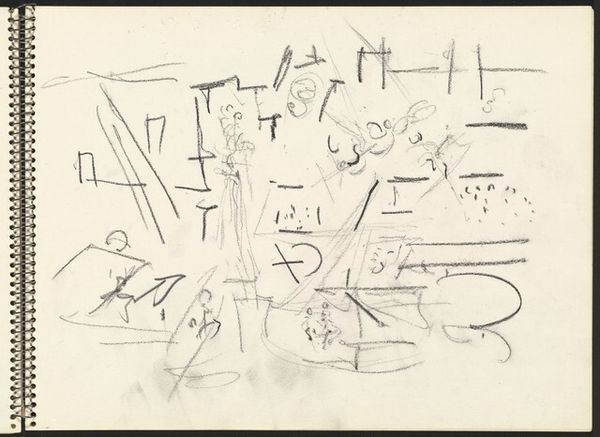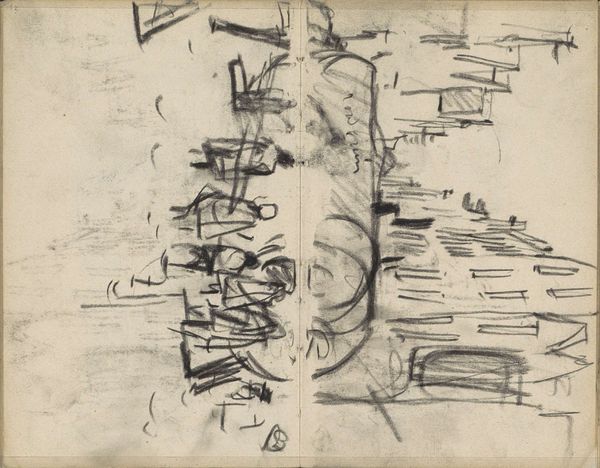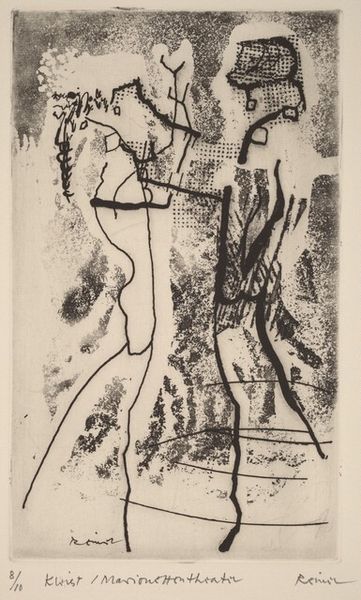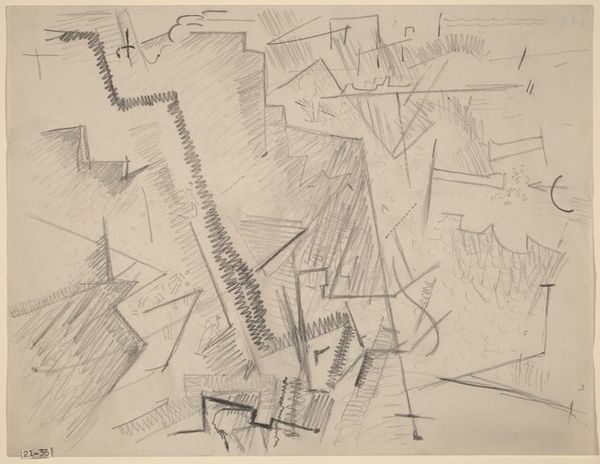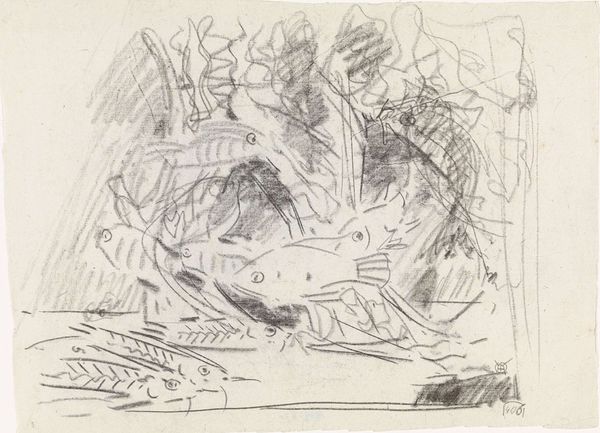
drawing, ink
#
drawing
#
pen sketch
#
german-expressionism
#
abstract
#
personal sketchbook
#
ink
#
sketchwork
#
ink drawing experimentation
#
geometric
#
pen-ink sketch
#
expressionism
#
line
#
pen work
#
sketchbook drawing
#
sketchbook art
#
doodle art
#
fantasy sketch
Copyright: Public Domain: Artvee
Curator: This is Wassily Kandinsky’s "Design for an etching," created in 1913 using ink on paper. It offers a fascinating glimpse into the artist's move toward abstraction, a pivotal moment in early 20th-century art. Editor: My first thought is controlled chaos. It's all jagged lines and frantic scribbles, but there's definitely a sense of underlying composition attempting to break free. What do you think inspired it? Curator: Kandinsky's involvement with the Blaue Reiter group in Munich played a crucial role. They believed in the spiritual in art, seeking to express inner emotional states rather than depicting the external world. Also, consider the cultural upheaval and anxieties leading up to World War I; these no doubt influenced the Expressionist movement generally. Editor: Absolutely. It's hard not to read those anxieties into the chaotic energy of this piece. Look at the forms; are they representational, or purely abstract? There is something unsettling with its raw, frenetic energy. Curator: It’s a transition point. You see remnants of recognizable forms that dissolve into abstract shapes and lines. He explored synesthesia, the idea that colors and sounds are linked, striving to create a visual equivalent of music. Editor: So the lines and shapes are acting like musical notes, trying to evoke a specific emotional response? How radical! Also, the limited colour choice makes the strong shapes stand out. The white is critical here. Curator: Precisely! His theories promoted artistic freedom, yet Kandinsky's abstraction faced considerable criticism, as it challenged traditional academic conventions of the time and required audiences to accept novel visual languages. Editor: But in that rejection, Kandinsky opened a space for questioning existing social orders through visual means. He offered not just a new style, but a new way of seeing the world. Curator: That's a potent point. Understanding Kandinsky within this larger socio-political framework provides a richer appreciation. Editor: Agreed. Seeing the work as a design for an etching is fascinating. It shows the intentionality behind even seemingly spontaneous marks, doesn’t it? Curator: Indeed, his theoretical and philosophical underpinnings gave immense gravitas to his work and had immense sway on later generations. Editor: It's amazing how much can be packed into a simple ink drawing! I think I now see a struggle towards something different - but one that perhaps doesn't feel particularly free.
Comments
No comments
Be the first to comment and join the conversation on the ultimate creative platform.
